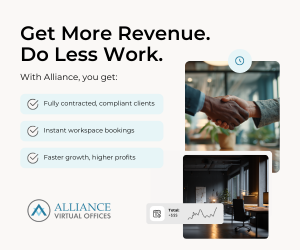- Freelancers and small business owners need to understand their health insurance options beyond employer-provided coverage.
- The Affordable Care Act offers a marketplace with various plans based on income and family size.
- Health Savings Accounts and Medicaid can also provide financial relief for those who qualify.
Let’s face it: healthcare in the U.S. is an unjust nightmare. There isn’t a national free health service (like many other countries offer), and if you have healthcare through an employer — premiums and copays can be exorbitant.
But what if your employer doesn’t offer healthcare at all, or you’re a freelancer or part-time worker who doesn’t qualify for employer healthcare?
It seems more and more individuals are finding themselves outside the traditional corporate structure as the future of work evolves. Whether you’re freelancing, running a small business, or working for a startup that doesn’t offer health insurance, finding a reliable healthcare plan can feel overwhelming.
But, there are some options to explore that can help ensure you’re covered without the help of an employer.
Understanding the Basics
Health insurance is essential for protecting your health and managing potential medical expenses. Without employer benefits, you’ll need to take on the responsibility of selecting your own coverage.
But where should you start?
The first step is understanding the different types of health insurance available to self-employed individuals and those without employer-provided options.
The Health Insurance Marketplace
The Health Insurance Marketplace, established by the Affordable Care Act (ACA), is a good place to begin your search. Through the marketplace, you can access a variety of plans, from basic coverage to more comprehensive packages, depending on your needs and budget. Open enrollment periods typically run once a year, but certain life events — like moving or a change in employment status — can allow you to apply for a plan outside of these windows.
Typically, the Bronze Plan is the lowest-cost option and may have a higher deductible and out-of-pocket costs. Premiums average about $400 a month, depending on age and income.
If you’re eligible for subsidies, the marketplace also provides options to reduce your monthly premiums and out-of-pocket expenses. For example, someone earning $30,000 per year might pay less than $300 monthly for a Bronze plan.
It’s important to check if your income qualifies for assistance, as many people find they qualify for more affordable plans than they initially expect.
Short-Term Health Plans
Short-term health insurance is another alternative to consider, particularly if you’re between jobs or need temporary coverage. These plans typically provide basic protection for a limited period — usually up to a year — and can be a cost-effective option if you’re healthy and don’t require extensive medical care.
However, they often come with fewer benefits and can exclude pre-existing conditions, so it’s vital to read the fine print and understand the coverage limitations. Most large insurers offer such plans.
For a healthy individual, short-term plans may cost around $100 to $200 per month. This usually covers major medical emergencies like hospital visits, but may not include preventive care, prescription drugs, or mental health services.
Health Savings Accounts (HSAs) and High-Deductible Plans
If you’re self-employed or run your own business, a Health Savings Account (HSA) can be a useful tool for managing healthcare expenses. When paired with a high-deductible health plan (HDHP), an HSA allows you to save money tax-free for future medical expenses. This option is particularly beneficial for those who want to cover unexpected medical costs while also saving for the future.
However, it’s important to note that an HDHP generally has higher out-of-pocket costs upfront, so this option may be better suited for individuals who don’t expect to need much care but want to protect themselves in the event of a medical emergency.
Spouse or Parent’s Plan
If you’re married, one of the easiest ways to secure health insurance outside of your employer is to be added to your spouse’s plan. Most employer-based health insurance policies allow spouses to be covered, even if the other spouse isn’t employed by the same company. The same applies to children: many health plans offer coverage up to age 26, allowing young adults to stay on their parents’ insurance until they can secure their own.
COBRA Continuation Coverage
If you recently lost your job or are changing jobs and had employer-sponsored health insurance, COBRA (Consolidated Omnibus Budget Reconciliation Act) may be available as an option. This federal program allows individuals to continue their previous employer’s health coverage for a limited time (typically up to 18 months) after leaving employment.
While COBRA can be a valuable option, it comes at a cost — the individual must pay the full premium, which can be significantly higher than what they were paying while employed.
For individuals, COBRA premiums can range from $400 to $700 per month on average.
Medicaid: A Vital Option for Those in Need
If you find yourself without employer-sponsored health insurance and have limited income, Medicaid might be the best option to explore. Medicaid is a federal and state program designed to provide health coverage for low-income individuals, families, seniors, and those with disabilities.
Each state administers its own Medicaid program with different eligibility rules, so coverage can vary depending on where you live.
How to Qualify for Medicaid
Eligibility for Medicaid is based primarily on income, household size, and other factors like pregnancy, age, or disability status. Generally, individuals and families who earn up to 138% of the federal poverty level (FPL) may qualify. Here’s an example of the FPL for 2025:
- For an individual: If you earn less than $21,597 annually, you might be eligible.
- For a family of four: If your household earns less than $44,367 per year, you could qualify.
However, some states have expanded Medicaid eligibility under the Affordable Care Act (ACA), meaning more people may qualify in those states, including individuals who earn higher incomes.
What You Pay for Medicaid
The cost of Medicaid varies by state, but one of its key benefits is that it is very low-cost or free for eligible individuals. Most states charge little or no premiums, copayments, or deductibles for Medicaid recipients. However, in some states, you might be required to pay a small premium (typically ranging from $10 to $50 per month).
The real advantage of Medicaid is that it provides comprehensive health coverage, including doctor visits, hospital care, prescription drugs, and mental health services — all at little to no cost to those who qualify.
Applying for Medicaid
To apply for Medicaid, visit your state’s Medicaid website, or use the Health Insurance Marketplace to determine if you qualify. If you do, you’ll be guided through the application process, which typically involves providing information about your income and household size. In many cases, the process is quick and straightforward, and you can apply year-round since Medicaid has no open enrollment period.
The Bottom Line
Health insurance without employer benefits might initially seem like an impossible challenge, but with the right tools and resources, securing coverage can be a smooth process. Whether you go through the Health Insurance Marketplace, look into short-term plans, or explore other options like COBRA or a spouse’s plan, there are plenty of avenues to ensure you remain covered.
In the end, the most important thing is to assess your healthcare needs and budget carefully. Doing so will help you find the plan that works best for your lifestyle and provides peace of mind as you focus on what matters most — your health and well-being.


 Dr. Gleb Tsipursky – The Office Whisperer
Dr. Gleb Tsipursky – The Office Whisperer Nirit Cohen – WorkFutures
Nirit Cohen – WorkFutures Angela Howard – Culture Expert
Angela Howard – Culture Expert Drew Jones – Design & Innovation
Drew Jones – Design & Innovation Jonathan Price – CRE & Flex Expert
Jonathan Price – CRE & Flex Expert














